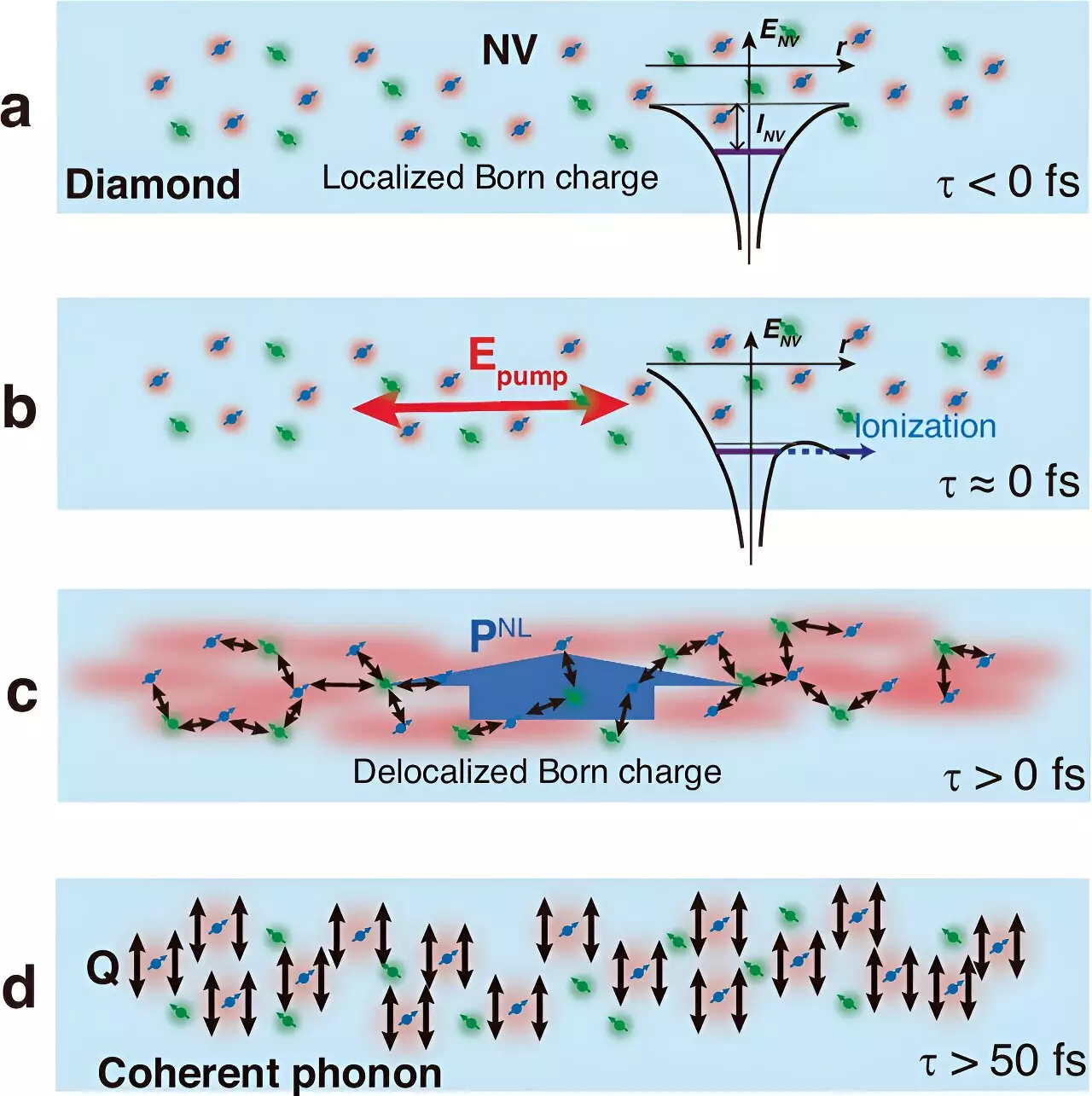Recent research led by the University of Tsukuba has unveiled intriguing cooperative behaviors of polaron quasiparticles generated from intricate interactions between electrons and lattice vibrations at color centers within diamond crystals. This groundbreaking insight, published in the esteemed journal Nature Communications, builds upon existing knowledge surrounding the remarkable properties of diamonds, which are not merely valued for their aesthetic appeal but also for their unique electronic characteristics stemming from specific lattice defects.
The study particularly focuses on the formation of nitrogen-vacancy (N-V or NV) centers, which arise from nitrogen impurities creating vacancies next to carbon atoms in diamond. These NV centers significantly contribute to the diamond’s coloration and manifest as critical lattice defects that present exceptional sensitivities towards variations in environmental conditions—such as temperature fluctuations and magnetic fields. These sensitivities result from alterations in the quantum states of the NV centers, emphasizing their potential for crafting sensors with high spatial resolution and sensitivity.
The mechanics behind the influence of crystal lattice distortion on electron energy levels in NV centers have remained somewhat elusive. This research is pivotal in bridging that gap, revealing how these distortions alter the interactions among electrons and surrounding lattice vibrations, forming polarons that enhance our understanding of these quantum features.
To explore these phenomena, the researchers utilized extremely thin nanosheets equipped with density-controlled NV centers adjacent to the surfaces of highly pure diamond crystals. By bombarding these sheets with ultrafast laser pulses, the team meticulously analyzed the subsequent changes in the reflectance of the diamonds. The empirical data collected highlighted a striking increase—by approximately 13 times—in the amplitude of lattice vibrations, despite the relatively sparse distribution of NV centers in comparison to other defects that usually dominate the hydrodynamic behavior of the lattice.
This amplification demonstrates a pronounced synergy between the quasiparticles and the lattice vibrations, underpinning the presence and role of polarons within these quantum systems.
In a significant theoretical advance, first-principles calculations of the charge states in NV centers revealed imbalanced distributions of positive and negative charges, indicative of dynamic electronic behaviors. The appearance of Fröhlich polarons—previously thought absent in diamonds—constitutes a pivotal finding within the study. These quasiparticles are recognized for following a free carrier, which is enveloped in a phonon cloud, leading to diverse forms of polarons that can significantly alter the interaction dynamics within the diamond matrix.
This discovery opens a vast realm of possibilities for advancing quantum sensing technologies centered around NV centers, capitalizing on the newly identified polaron behaviors to enhance sensor performance.
The University of Tsukuba’s research elucidates the complex interactions governing polaron quasiparticles in diamond, enriching our comprehension of quantum anomalies and sensory technologies. With the newfound understanding of polarons arising from NV centers, we stand on the threshold of innovative advancements that may redefine our engagement with diamond-based applications, particularly in fields that demand precision measurement and high sensitivity. The implications of these findings extend far beyond academia, heralding transformative potential in technology and materials science.

